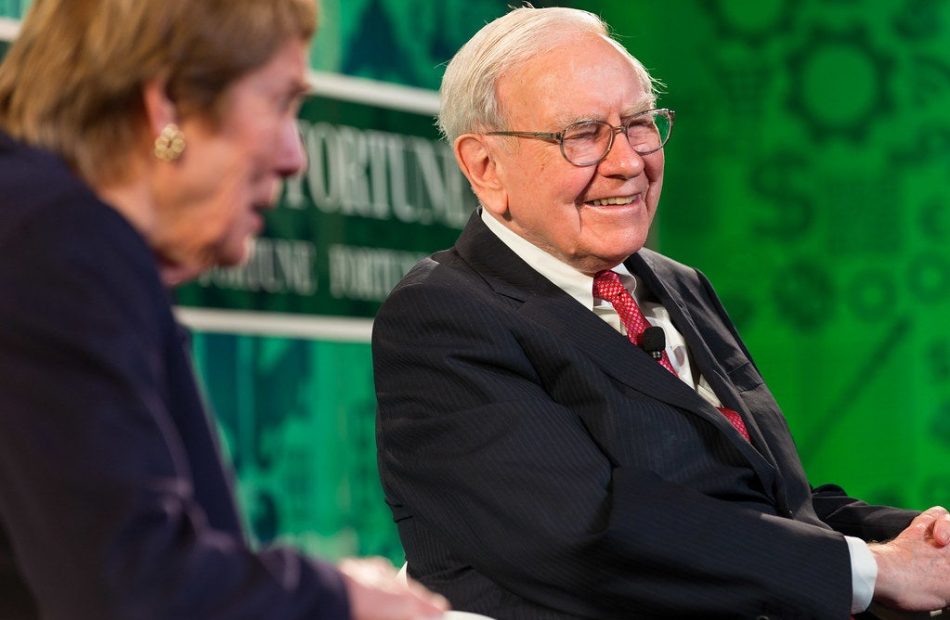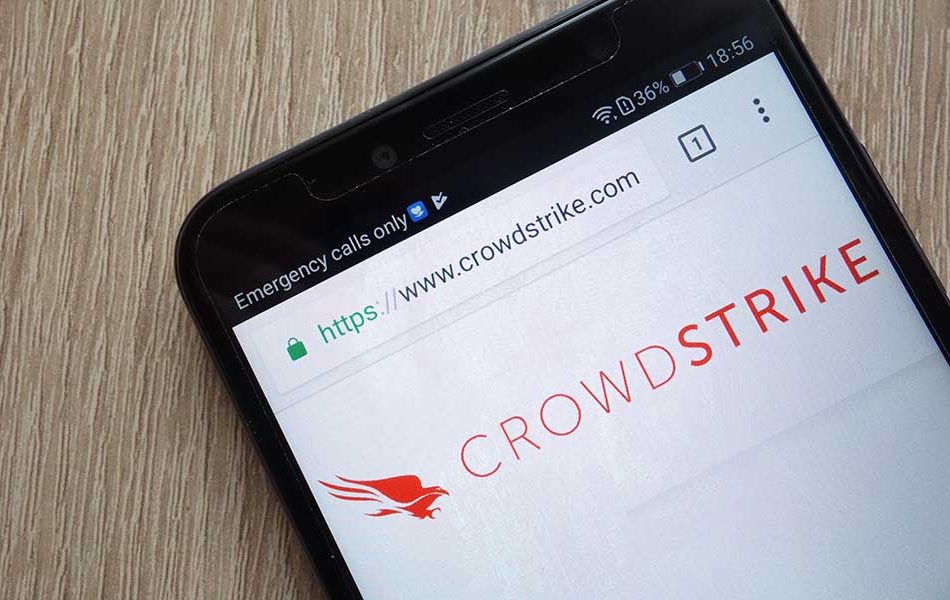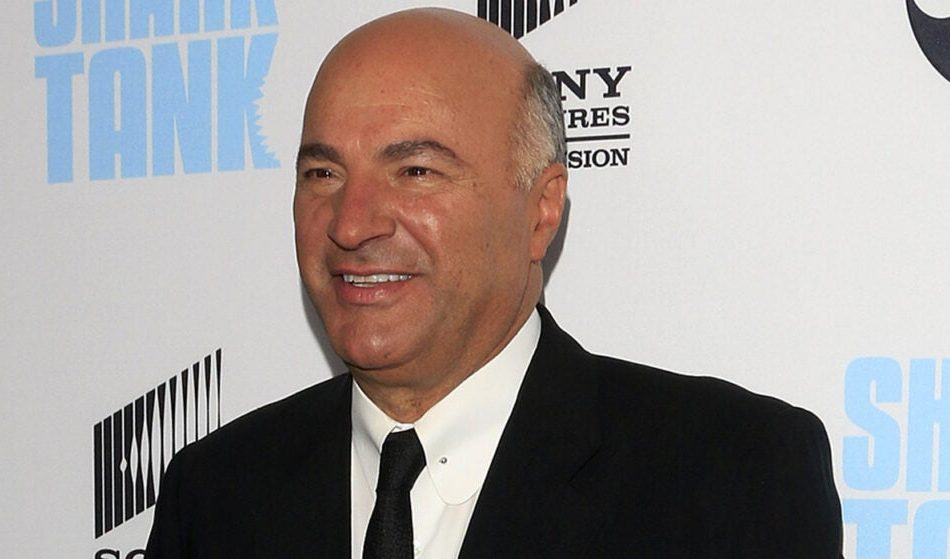'Bizarro World' – People Are Really Confused By Elon Musk Praising Argentina's Javier Milei Slashing Import Taxes
Elon Musk sparked confusion online yet again – this time with his take on Argentina’s new import tax cuts. Recently, Argentina’s President-elect Javier Milei announced a major policy change to reduce taxes on imports.
Don’t Miss:
As part of his economic reform plan, Milei wants to make imported goods more affordable. Starting in December, he will raise the tax-free limit on international purchases from $1,000 to $3,000. Personal imports will also get a tariff exemption of up to $400. This move is meant to open up the economy and make things easier for shoppers in Argentina.
Elon Musk seemed to think so. In response to a tweet discussing Milei’s idea, he expressed his support for the tax cut by simply saying, “Good move.”
The tweet caught a lot of attention as many people quickly called Musk out for what they saw as mixed signals – supporting a policy in Argentina that seems opposite to the U.S. import tariffs promoted by Donald Trump, whom Musk has also publicly supported.
For instance, one user tweeted, “You supported the presidential campaign of the guy advocating for the largest tariff hike in modern U.S. history, lmao.” Another wrote, “Import taxes = tariffs. You support cutting them elsewhere and raising them here? Shameful hypocrisy.” Alex Cole added to the discourse, writing, “So removing tariffs is a good move and Donald Trump adding tariffs is also a good move? Bizarro world.”
See Also: This Jeff Bezos-backed startup will allow you to become a landlord in just 10 minutes, with minimum investments as low as $100 for properties like the Byer House from Stranger Things.
Different Countries, Different Needs?
Not everyone saw it as straight-up hypocrisy. Some X users argued that Musk’s take could be valid if viewed in the context of Argentina’s economy compared to the U.S.
Argentina is dealing with hyperinflation and a major recession, so reducing import taxes might be a much-needed lifeline to help people afford basic goods. Dan Victor, a CFA, commented, “It’s different for the world’s largest economy compared to one suffering from a deep recession and hyperinflation.”
Another user pointed out that different countries might use different tools for different reasons. “Start by studying comparative economic policy. Then, once you understand that two completely different countries/economies implementing different policies is normal, this should make a little more sense.”
While some felt Musk was inconsistent, others believed his opinion could make sense given the drastically different economic situations of Argentina and the United States. The U.S. has a massive, stable economy, whereas Argentina is struggling to stabilize itself amid economic turmoil.
Read Next:
Market News and Data brought to you by Benzinga APIs
© 2024 Benzinga.com. Benzinga does not provide investment advice. All rights reserved.
Ask an Advisor: How Do I Retire at 62 With $680K in a 401(k), $150K in Cash, and a $1,600 Pension?
SmartAsset and Yahoo Finance LLC may earn commission or revenue through links in the content below.
I currently have $680,000 in a 401(k), $150,000 in savings and a pension of $1,600 per month. Can I retire at age 62?
– Hieu
This is a good question and the answer depends primarily on what your expenses are and how much you will collect from Social Security. What we can do here is run the numbers on a few different scenarios to give you a sense of how much income you can expect to have and the level of monthly expenses that your income might support. (And if you have more retirement-related questions, consider speaking with a financial advisor.)
First, let’s look at what your retirement income might be before considering Social Security benefits.
Your pension is straightforward. That $1,600 per month is a consistent income that provides a strong baseline for supporting your needs. On an annual basis, your pension income will be $19,200 per year.
You also have $830,000 between your 401(k) and your savings. Using the 4% rule, you should be able to withdraw about $33,200 from these sources in your first year of retirement before adjusting subsequent withdrawals for inflation.
Between your pension and account withdrawals, you’re starting with $52,400 in annual income. Depending on where you live, you’ll likely have around $48,000 per year to spend after taxes are taken out.
That comes out to about $4,000 in monthly expenses that you’re in a position to support before factoring in Social Security. (And if you need help building sources of retirement income or estimating how much you’ll have, consider matching with a financial advisor.)
Of course, Social Security could add a significant amount of income to the equation. Using the Social Security Administration’s Quick Calculator, I ran a few different scenarios to see how they would affect your situation.
First, I assumed that you turned 62 on Oct. 1, 2023, and made $40,000 in your most recent year of employment. In that scenario, here’s your estimated annual Social Security income depending on when you retire:
-
Age 62: $11,340 per year
-
Age 67: $17,064 per year
-
Age 70: $21,816 per year
When added to the income from your pension and your savings, you’re looking at a total annual pre-tax income of between $63,740 and $74,216.
Next, I ran the same scenario, but assumed that your employment income was $70,000. Using the same calculator, here is your estimated Social Security benefit at each retirement age:
Is Warren Buffett Preparing For A Market Downturn With Berkshire Hathaway's $325B Cash Pile? Analyst Says Internet Bubble And 2008 Crash May Have Lessons
Berkshire Hathaway Inc. BRK BRK has amassed a staggering $325 billion cash reserve, its largest ever, and nearly double the previous year’s balance. This coincides with a record high in Warren Buffett’s favored valuation metric: the stock market’s value relative to the U.S. economy. While this may seem like Buffett is predicting an imminent market downturn, his strategy is more nuanced and insightful.
What Happened: Nir Kaissar, founder of Unison Advisors, said in an opinion piece for Bloomberg that Buffett readily admits he cannot forecast short-term market movements or crashes. Instead, he focuses on long-term returns, adjusting Berkshire’s asset allocation accordingly.
Kaissar explains this approach as allocating assets based on expected returns rather than speculating on market timing. This principle has consistently shaped Buffett’s decisions.
Berkshire’s cash allocation has fluctuated dramatically, from 1% in 1994 to 28% today. “The record shows Buffett consistently raising Berkshire’s cash allocation as stock valuations rise during booms — and expected returns consequently decline — and drawing down cash as opportunities arise,” Kaissar said.
He added that during the 1990s internet bubble, Buffett increased cash holdings as valuations soared but deployed capital as opportunities emerged. Similarly, leading up to the 2008 financial crisis, Buffett boosted cash reserves, only to invest strategically during the downturn, including a well-timed Goldman Sachs stake.
Buffett’s approach hinges on a fundamental principle: valuations and future returns are inversely related. When assets are overvalued, expected returns decline, justifying higher cash reserves.
Today, the market-to-GDP ratio is at unprecedented levels, signaling potentially lower future returns. With cash yields comparable to those during past booms, Berkshire’s significant cash reserve reflects Buffett’s strategy of preparing for opportunities in an uncertain market.
Why It Matters: The surge in Berkshire’s cash reserve has sparked speculation about Buffett’s motives. Some analysts believe it could be a sign of an impending market downturn, while others suggest it may be part of a larger strategy, such as an acquisition plan or a buyback plan in case of a succession.
Jeff Muscatello, a research analyst at Berkshire investor Douglass Winthrop, suggested that the impending management transition could be a factor in Buffett’s decision to cash out. “The nearing inevitable management transition makes it an opportune time to clear the decks for the next generation,” he said.
MicroStrategy Inc. co-founder Michael Saylor also weighed in. Saylor said Buffett was destroying billions of dollars in capital by not utilizing the huge hordes of cash at their disposal to invest in Bitcoin BTC/USD. “I’d want to bet you that if I had an hour alone with Buffett in a calm environment, I’d walk out and he would say this Bitcoin thing is a pretty good idea,” he said.
Read next:
Image via Flickr
This content was partially produced with the help of Benzinga Neuro and was reviewed and published by Benzinga editors.
Market News and Data brought to you by Benzinga APIs
© 2024 Benzinga.com. Benzinga does not provide investment advice. All rights reserved.
Why Wall Street Is Hiking CrowdStrike Price Targets Ahead Of Earnings Report
Four Wall Street brokerages on Friday upped their price targets on CrowdStrike Holdings (CRWD) ahead of the cybersecurity firm’s third quarter earnings report on Nov. 26. CrowdStrike stock has gained 40% in 2024 as shares rebound from a global IT outage in July.
JPMorgan, KeyBanc Capital Markets, Jefferies and Baird hiked CrowdStrike stock price targets on Friday. RBC Capital, Truist, Barclay and Morgan Stanley upped their price targets earlier in the week.
↑
X
Small Caps Jump As Breadth Strengthens; Amphenol, DECK, FTI In Focus
CrowdStrike Stock: ARR Key Metric To Watch
“Results for Q3 could be much better than some anticipate,” said JPMorgan analyst Brian Essex, in a report. “This is the first full quarter following the July 19 outage. We expect we will see a material impact from the company’s sales pause following the outage, in addition to the impact of accommodations offered through CrowdStrike’s Customer Commitment Packages (CCP).”
He added: “We expect growth, margins, and cash flow will reflect the greatest pressure this quarter, with fundamentals improving the farther we move away from the date of the outage.”
The key financial metric for investors heading into the CrowdStrike earnings report will be subscription-based annual recurring revenue (ARR). Analysts polled by FactSet estimate ARR of $4.01 billion for Q3, up 27% from a year earlier and 4% from the June quarter.
“We believe CrowdStrike is capable of growing ARR in the mid-20s% over the medium term,” said KeyBanc Capital analyst Eric Heath in a report.
↑
X
How To Buy Stocks: IBD’s Four Pillars Of Investing
Amid the IT outage, analysts expected lower growth for “net new” ARR because of delays in signing contracts and expectations that many customers will seek price discounts when renewing contracts to help cover the cost of business disruptions.
CrowdStrike’s negotiations with customers over pricing concessions are expected to play out through 2025 and perhaps beyond.
Jefferies analyst Joseph Gallo said in a report: “The biggest question for CRWD this quarter is will investors even care about Q3/Q4 potential softness as long as the long-term ARR trajectory remains on course. We believe the next major catalyst for shares remains opening fiscal 2026 guidance, which will not be provided until March.”
He added: “For fiscal 2026, consensus ARR of $5.1B implies growth of 21% year-over-year versus 23% in fiscal 2025.”
On Friday, CrowdStrike stock rose 4% to close at 372.26.
$1 Billion In Quarterly Revenue In Sight
CrowdStrike earnings for the October quarter are expected to fall 1% to 81 cents with revenue rising 25% to $983 million. The company is on track to report over $1 billion in revenue for the first time in the January quarter.
When reporting July quarter financial results, CrowdStrike cut guidance due to the global IT outage, caused by a faulty software update. CrowdStrike’s software update required access to Microsoft’s operating system. The two companies have been cooperating to prevent future incidents.
Delta Air Lines (DAL), which took a one-time, 45-cent hit to September quarter earnings tied to the IT outage, has sued CrowdStrike seeking reimbursement for damages.
Further, CrowdStrike competes with Palo Alto Networks (PANW), SentinelOne (S), Microsoft (MSFT) and others in the “endpoint” market. Endpoint security tools detect malware on laptops, mobile phones and other devices that access corporate networks.
Also, CrowdStrike is building a broad, threat-detection cybersecurity platform called XDR, or extended detection and response. It monitors endpoints as well as web/email gateways, web application firewalls and cloud business workloads.
Meanwhile, CRWD stock is among cybersecurity stocks to watch.
Follow Reinhardt Krause on Twitter @reinhardtk_tech for updates on artificial intelligence, cybersecurity and cloud computing.
YOU MAY ALSO LIKE:
Learn The Best Trading Rules At Investor’s Corner
Want To Trade Options? Try Out These Strategies
Monitor IBD’s “Breaking Out Today” List For Companies Hitting New Buy Points
IBD Digital: Unlock IBD’s Premium Stock Lists, Tools And Analysis Today
Costs Have Escalated Drastically, Warns Kevin O'Leary, Hopeful Elon And Vivek Can 'Simplify Tax And Deregulate The Economy'
Kevin O’Leary is warning about how expensive running a business in America is becoming. In a recent Fox Business segment, O’Leary discussed how complicated rules and taxes are making it harder for companies across industries.
He also expressed hope that leaders like Elon Musk and Vivek Ramaswamy could bring about change by simplifying taxes and reducing unnecessary regulations.
Don’t Miss:
“If they just solved for simplifying tax and deregulated the economy, just say 30%, pulled some of that regulation out,” O’Leary said. According to O’Leary, the costs associated with staying compliant – like paying auditors, consultants and lawyers – are going up by about 20% yearly. “The cost that I have to spend each year just to remain compliant goes up at about 20% a year between all the consultants, the auditors, the lawyers and the changing rules of regulation,” he shared.
O’Leary explained that he operates across all 11 sectors of the economy and has never seen such an escalation in costs as he has in the last five years. He’s not alone either; many other business leaders share his concerns. He mentioned that if you spoke to the CEOs of the S&P 500 companies, they would tell you these regulatory costs are among the most rapidly growing expenses they face.
See Also: CD Popularity Soars: Over 50 Million Americans Embrace Safe Savings with 5–10% Annual Growth
“There’s lots of room for efficiency, lots of room for action on that,” O’Leary said. By pulling back on the red tape, businesses could save money and use it for other purposes, such as expanding their operations, hiring more staff or lowering consumer prices.
O’Leary hopes that by bringing in business-minded leadership – people like Elon Musk, who has already shown his ability to cut through inefficiencies at Twitter or Vivek Ramaswamy, known for his straightforward approach – the U.S. could reduce these burdens and give companies some much-needed breathing room.
However, not everyone is convinced that Musk and Ramaswamy are the right leaders for this challenge. Critics argue that while Musk’s methods at Twitter have been effective in certain areas, they have also been controversial and have led to disruptions. Some doubt whether his approach would translate well to government-level regulation involving a different scale and set of complexities.
Similarly, while appealing, Ramaswamy’s straightforward approach may lack the nuance required to navigate the intricacies of federal regulations. There are concerns that oversimplification could lead to unintended consequences, potentially creating more issues than solutions.
Read Next:
Image Via Shutterstock
Market News and Data brought to you by Benzinga APIs
© 2024 Benzinga.com. Benzinga does not provide investment advice. All rights reserved.
1,200 readers told us what they regret about investing for retirement
Millions of Americans facing retirement are worried they won’t be financially prepared — or fear that they’ll have to work forever.
Some are already there. Finances and retirement were major themes in the roughly 1,200 responses Business Insider received from Americans between the ages of 48 and 90 who filled out a voluntary survey about their biggest regrets. (This is part two of an ongoing series.)
Many of the respondents in the baby boomer generation said retirement — how to invest and how much one needs — is a black box. Some wish they’d hired a financial advisor, while others regretted expensive purchases. Others said they took Social Security too early or retired without a long-term financial plan.
And then there are those who suffered an unexpected setback such as a cancer diagnosis, a job loss, or a divorce and wish they’d been better prepared for an emergency.
Gary Lee Hayes, 70, wished he’d been more regimented with his savings and investments. The California resident briefly served in the Navy, got a degree in public administration, and worked in mental health and handyman positions. He had little financial literacy growing up and said he didn’t focus on building his career to be more lucrative.
Two of Hayes’ main money regrets are not investing in Verizon stock early on and not saving at least 10% of his income each month. He also said he was somewhat too liberal with his spending throughout his life, though he said he didn’t purchase anything too far beyond his means. He also avoided putting money into his 401(k) and said he should have chosen more stable investments instead of short-term ones.
“You can’t expect that you’re all of a sudden going to win the lottery,” said Hayes, who receives $1,846 a month in Social Security and lives in government-subsidized housing. “You can’t expect that someone’s going to pass and leave you an inheritance that will make your life more comfortable.”
A major theme among BI’s survey respondents was that they lacked knowledge about investing. For some, this meant not saving enough; for others, it meant falling into some common investing mistakes.
The Stock Market Is Soaring but These 2 Stocks Are Still Dirt Cheap Buys
Earlier this month, the S&P 500 hit a record high of more than 6,000 for the first time ever. Based on that, you might assume that stocks may be too expensive to buy right now as the average stock in the index is trading at more than 25 times earnings. However, there are still many deals out there.
Two stocks that could be among the best bargains right now include AbbVie (NYSE: ABBV) and Comcast (NASDAQ: CMCSA).
Are You Missing The Morning Scoop? Wake up with Breakfast news in your inbox every market day. Sign Up For Free »
Drugmaker AbbVie isn’t having a great year, but it’s not having a bad one, either. Its year-to-date gains totaled a modest 7% as of Monday’s close. That’s decent, but it’s nowhere near the S&P 500’s more impressive 23% rally.
For a while, the stock was outperforming the broad index. However, things went sideways for AbbVie recently after the company reported last week that its schizophrenia drug, emraclidine, failed to meet its primary endpoint in a phase 2 clinical trial. Emraclidine seems to have had the potential to be a blockbuster drug for AbbVie, and investors didn’t take the news lightly, dumping the stock afterward.
For a diverse business like AbbVie, that is by no means crippling to its operations or long-term outlook. In its most recent quarter, for the period ending Sept. 30, the company reported $14.5 billion in revenue, which grew by nearly 4% year over year — and that includes a 37% decline in Humira, which recently lost patent protection. AbbVie’s diverse business spans immunology, oncology, aesthetics, neuroscience, and eye care.
Yet, investors generally recognize that the company is no pushover. Abbvie has historically proven itself to be a growing business. While the pharmaceutical business is inherently risky, and failures will probably show up in Abbvie’s pipeline of drug therapies, that itself isn’t a reason to turn bearish on what’s still a top stock to buy and hold. Eventually, the risk-reward profile is too good to ignore.
AbbVie is facing a slowdown right now but the company expects that in 2025 it will “return to robust growth” and that through until the end of the decade, it will grow by high-single digits per year. And while Humira has lost patent protection, the company has effectively replaced that revenue with Skyrizi and Rinvoq, two immunology drugs which it believes will combine for higher peak revenue than its popular rheumatoid arthritis treatment.
For investors looking to play the long game, this sell-off can be an opportune time to buy AbbVie on weakness as it trades at a forward price-to-earnings (P/E) multiple of 14, which looks dirt cheap for such a great growth stock.
e.l.f. Beauty, Inc. Announcement: If You Have Suffered Losses in e.l.f. Beauty, Inc. (NYSE: ELF), You Are Encouraged to Contact The Rosen Law Firm About Your Rights
NEW YORK, Nov. 23, 2024 (GLOBE NEWSWIRE) —
WHY: Rosen Law Firm, a global investor rights law firm, announces an investigation of potential securities claims on behalf of shareholders of e.l.f. Beauty, Inc. ELF resulting from allegations that e.l.f. Beauty may have issued materially misleading business information to the investing public.
SO WHAT: If you purchased e.l.f. Beauty securities you may be entitled to compensation without payment of any out of pocket fees or costs through a contingency fee arrangement. The Rosen Law Firm is preparing a class action seeking recovery of investor losses.
WHAT TO DO NEXT: To join the prospective class action, go to https://rosenlegal.com/submit-form/?case_id=31380 or call Phillip Kim, Esq. toll-free at 866-767-3653 or email case@rosenlegal.com for information on the class action.
WHAT IS THIS ABOUT: On November 20, 2024, Muddy Waters Research issued a report in which it announced that it had a short position in e.l.f. Beauty, Inc. Muddy Waters stated that it believed that e.l.f. Beauty had “materially overstated revenue over the past three quarters,” and that it believed that in “Q2 FY24, ELF management realized its growth narrative was in trouble as its inventory built. It appears that ELF then began reporting inflated revenue and profits. Its reported inventory also appears materially inflated as a result – i.e., to account for cash that has not really come in.”
On this news, e.l.f. Beauty, Inc. stock fell as much as 15% in intraday trading on November 20, 2024.
WHY ROSEN LAW: We encourage investors to select qualified counsel with a track record of success in leadership roles. Often, firms issuing notices do not have comparable experience, resources, or any meaningful peer recognition. Many of these firms do not actually litigate securities class actions. Be wise in selecting counsel. The Rosen Law Firm represents investors throughout the globe, concentrating its practice in securities class actions and shareholder derivative litigation. Rosen Law Firm achieved the largest ever securities class action settlement against a Chinese Company at the time. Rosen Law Firm was Ranked No. 1 by ISS Securities Class Action Services for number of securities class action settlements in 2017. The firm has been ranked in the top 4 each year since 2013 and has recovered hundreds of millions of dollars for investors. In 2019 alone the firm secured over $438 million for investors. In 2020, founding partner Laurence Rosen was named by law360 as a Titan of Plaintiffs’ Bar. Many of the firm’s attorneys have been recognized by Lawdragon and Super Lawyers.
Follow us for updates on LinkedIn: https://www.linkedin.com/company/the-rosen-law-firm, on Twitter: https://twitter.com/rosen_firm or on Facebook: https://www.facebook.com/rosenlawfirm/.
Attorney Advertising. Prior results do not guarantee a similar outcome.
——————————-
Contact Information:
Laurence Rosen, Esq.
Phillip Kim, Esq.
The Rosen Law Firm, P.A.
275 Madison Avenue, 40th Floor
New York, NY 10016
Tel: (212) 686-1060
Toll Free: (866) 767-3653
Fax: (212) 202-3827
case@rosenlegal.com
www.rosenlegal.com

Market News and Data brought to you by Benzinga APIs
© 2024 Benzinga.com. Benzinga does not provide investment advice. All rights reserved.
Divorcing at 55 With $800K in My 401(k) – How Do I Protect My Finances?
SmartAsset and Yahoo Finance LLC may earn commission or revenue through links in the content below.
Like all family and property law, divorce is a highly state-specific process. How you will handle a divorce and protect your assets, and what constitutes individual vs. shared assets, will depend entirely on your jurisdiction. As a result, how retirement accounts are treated during divorce proceeds can vary widely from state to state.
The first step is typically to separate personal from marital assets. In most cases, you retain assets and debts that predated the marriage, and you split assets and debts that you acquired while you were married. This is far more complicated than it sounds, as it’s very easy for assets to comingle and share accrued value during the course of a marriage.
For example, say that you are 55 years old with $800,000 in a 401(k). The most important part of this will be where you live and how much of the account was earned during the marriage. From there, a divorce court will typically divide up the 401(k) based on your household’s overall assets and, in particular, any other retirement accounts held by you or your spouse.
While a complete discussion of this issue is far beyond the scope of a single article, we’ll explore some of the most important factors to consider below.
If you need financial advice during or after a divorce, consider connecting with a fiduciary financial advisor today.
Divorce courts typically do not give special status to a couple’s tax-advantaged retirement accounts. A judge will treat these portfolios as a standard financial asset, splitting up each account based on the overall distribution of assets, the parties’ relative financial status and an account’s marital vs. personal status, among other factors.
There is no tax penalty for taking early withdrawals in order to transfer retirement assets between divorcing spouses. This is typically done through a “Qualified Domestic Relations Order” or a “Transfer Incident to Divorce” depending on the nature of the account.
You can move these funds directly into another qualifying pre-tax account without triggering income taxes or an early withdrawal penalty.
For example, say that you have $800,000 in a 401(k), of which you had $300,000 in the account when you got married. Typically, you will keep that $300,000. The remaining $500,000 might be considered a marital asset and be distributed between you and your spouse. You might then agree to split that money 50/50, and draft a QDRO to remove $250,000 worth of assets from your 401(k) and move them to an account of your spouse’s choosing.
This Dividend King Is on Track to Join the $1 Trillion Club. Is It a Buy?
There are currently eight publicly traded companies with market caps of $1 trillion or more: Nvidia, Apple, Microsoft, Alphabet, Amazon, Meta Platforms, Tesla, and Berkshire Hathaway.
Those stocks are highly renowned, and for good reason: They have made plenty of investors wealthy. However, none of them are particularly known as dividend stocks, and thus far the trillion-dollar club has excluded longtime dividend payers. However, that could soon change.
Start Your Mornings Smarter! Wake up with Breakfast news in your inbox every market day. Sign Up For Free »
Walmart (NYSE: WMT), the world’s biggest retailer and the largest company in the world by revenue, has quietly blown away the rest of the retail sector in recent years as its commitment to omnichannel sales and reputation for everyday low prices have delivered steady growth. Meanwhile, many of its peers have struggled with inflation and weak consumer spending.
Walmart reported another round of strong quarterly results on Tuesday morning. Top-line growth was strong across the board with comparable-store sales (comps) up 5.3% at U.S. stores (excluding fuel), its best performance in at least five quarters. And Sam’s Club, its members-only warehouse retail chain, reported 7% comps growth excluding fuel.
At its international segment, which has historically been a challenging segment for the company, constant-currency revenue rose 12.4% to $30.3 billion. Overall, revenue was up 5.5% to $169.6 billion, which topped the consensus at $166.6 billion.
The retailer also delivered solid margin improvement, with gross margin increasing 21 basis points to 24.2%, driven by lower markdowns in U.S. stores and strong inventory management. Overall operating margin expanded as well, as operating income was up 8.2% to $6.7 billion. Adjusted earnings per share (EPS) rose from $0.51 to $0.58, ahead of the consensus at $0.53.
Walmart’s stores performed well, but it’s also benefiting from emerging growth businesses like advertising, where revenue jumped 28%, and global e-commerce remains strong with sales up 27% as it gains market share on Amazon and other competitors.
The company also raised its guidance, showing increased confidence in the holiday quarter. It now expects net sales to rise 4.8% to 5.1% and full-year adjusted EPS of $2.42 to $2.47.
Walmart’s market cap topped $700 billion for the first time on Tuesday, Nov. 19, meaning the company is approaching a $1 trillion market cap. At its current valuation, the stock would only have to grow by 43%, which seems achievable given its recent momentum. The stock is now up 66% year to date, though it will be difficult to repeat that performance next year.










